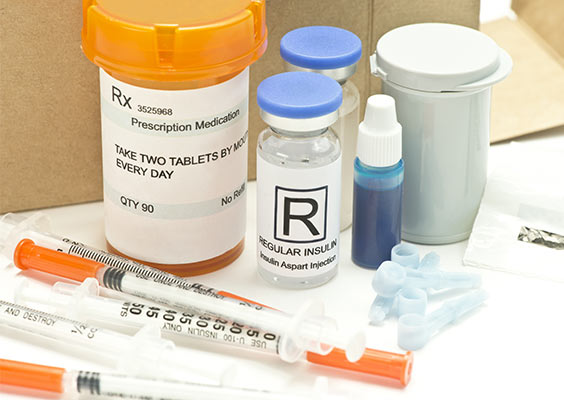Researchers have discovered a direct link between low vitamin D3 levels and insulin resistance, pre-diabetes and full-blown type 2 diabetes.1
The study, which came out of Harbin Medical University in China, also revealed that even with a minor vitamin D3 deficiency, your risk of developing type 2 diabetes increases by 91%.2

I’m not surprised. It’s a connection I’ve seen with my patients for many years at the Sears Institute for Anti-Aging Medicine.
Diabetes can be prevented — and conquered — through the healing power of vitamin D3.
This fat-soluble vitamin is one of the core “primal” nutrients that kept our ancestors strong, potent and disease-free.
You see, vitamin D isn’t really a vitamin at all. It’s a steroid hormone that influences virtually every cell in your body.
From your heart to your brain to your immune system, maintaining healthy vitamin D levels is crucial for warding off a range of diseases — from cancer and heart disease to dementia and osteoporosis.
You won’t hear this from mainstream medicine, but the link between diabetes and low vitamin D levels is now beyond question.
Studies also show that diabetic neuropathy — probably the greatest fear of most diabetics — can be reversed by correcting your vitamin D3 deficiency.3
What is diabetic neuropathy?
Diabetic neuropathy is commonly caused by chronic high blood-sugar levels. This results in damage to the walls of the tiny blood vessels that supply oxygen and nutrients to the nerves in the ends of the hands and feet, as well as the essential organs in the body.4
Mainstream medicine wants you to believe the only thing you can do is take Big Pharma’s pills for the rest of your life.

Most doctors prescribe metformin. But to date, Big Pharma’s meds have failed to prevent the pand
emic explosion of diabetes around the world and the painful neuropathy suffered by millions of diabetes patients around the world.Metformin also comes with potential side effects like dizziness, fatigue, cardiovascular reactions, flu-like symptoms, muscle pain, stomach pain, diarrhea and anemia.5
Natural remedies to prevent diabetes
But you can protect yourself from diabetes — and the pain and damage of neuropathy — by making sure you’re getting enough vitamin D3.
In my patients, I consider “therapeutic level” of vitamin D3 in your blood to be between 50 and 60 ng/ml. To reach that level, I recommend a daily intake of 8,000 IUs of vitamin D3 per day.
The good news is that while most Americans are woefully deficient in vitamin D, it’s incredibly easy to get up to optimal levels.
Here’s what I recommend to my patients:
Step 1: Don’t be afraid of the sun. As long as you avoid sunburn, getting some midday sun unprotected for about 10 to 15 minutes a day is good for you. It will give you between 3,000 and 5,000 IUs of vitamin D3.

But here’s what you need to remember. It’s not enough to just take a walk. You need to expose the skin that’s usually covered up. If you always wear a shirt when you’re out in the sun, try taking your shirt off. Even if you just sit in your backyard for a few minutes. Getting sun when you’re all covered up will not have the same effect.
Step 2: Eat foods rich in vitamin D3. Make sure you add food sources of vitamin D3 to your daily diet. A serving of cooked wild salmon and mackerel provide roughly 350 IU vitamin D3 each. Sardines and tuna in oil provide about 225 IUs of vitamin D3 each. And one tablespoon of cod liver oil contains nearly 1,400 IUs of vitamin D3. Mushrooms are the only vegetable that contains vitamin D.

Step 3: Take a supplement. Your food probably won’t give you all the vitamin D3 you need. I recommend taking a supplement of vitamin D3 called cholecalciferol. It’s the same vitamin D3 that your body produces. Just be sure to avoid the synthetic form of vitamin D2 in most multivitamins. It’s less potent and less absorbable.

As I mentioned, I recommend a daily intake of 8,000 IUs of vitamin D3 per day.
And you should always take a magnesium supplement with your D3. Magnesium is a mineral involved in over 300 different processes in the body, including the ability to make and use ATP, the body’s main form of energy.
Because your magnesium levels can fall when boosting your vitamin D3 intake, make sure to supplement your diet with between 600 and 1,000 mg of magnesium per day.
I also recommend you include vitamin K2 with your D3 supplement to help activate and improve absorption.
To Your Good Health,
![]()
Al Sears, MD, CNS
1. Huang Y, Li X, Wang M, et al. Lipoprotein lipase links vitamin D, insulin resistance, and type 2 diabetes: a cross-sectional epidemiological study. Cardiovasc Diabetol. 2013;12:17.
2. Ibid
3. David S. H. Bell “Reversal of the Symptoms of Diabetic Neuropathy through Correction of Vitamin D Deficiency in a Type 1 Diabetic Patient.” Case Rep Endocrinol. 2012; 2012: 165056. Published online 2012 Dec 12. doi: 10.1155/2012/165056
4. Feldman EL. Epidemiology and classification of diabetic neuropathy. Waltham, MA, US: UpToDate, Inc. uptodate.com. Information published online, accessed 13th March 2015. MedicineNet.com. Metformin – Oral.
